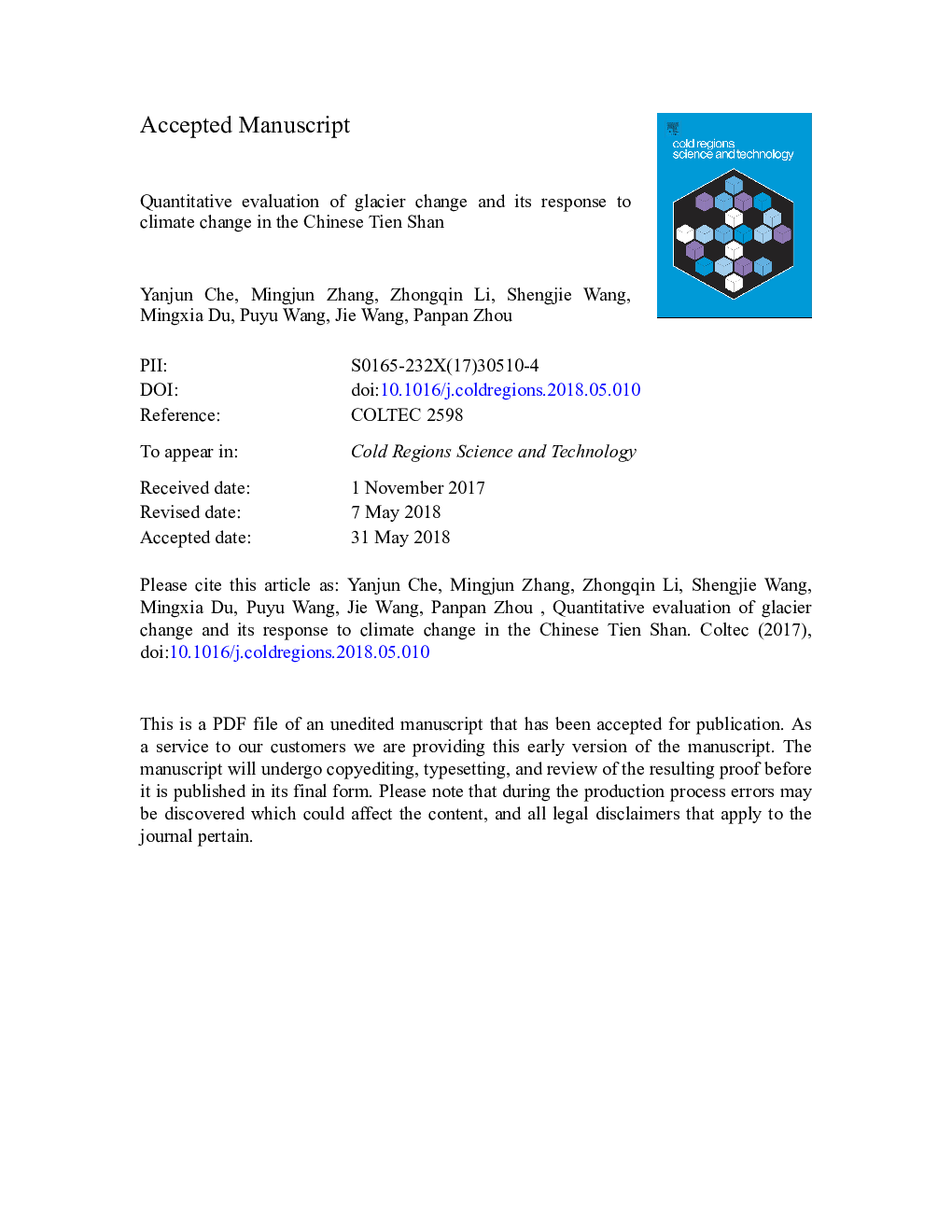| Article ID | Journal | Published Year | Pages | File Type |
|---|---|---|---|---|
| 8906423 | Cold Regions Science and Technology | 2018 | 43 Pages |
Abstract
Glacier melt water is an important water resource in arid regions of central Asia during the dry seasons, and it is very susceptible to climate disturbances. In this paper, based on the glacier datasets of the first and second Chinese Glacier Inventories, the glacier change in the Chinese Tien Shan from 1960s to 2010 was quantify by assessing the Annual Percentages of Area Changes (APAC), Annual Percentages of Volume Changes (APVC), and Equilibrium Line Altitude (ELA). The results indicated that the mean glacier area and mean glacier volume decreased by 0.7%â¯Â±â¯0.6% per year and 0.83%â¯Â±â¯0.73% per year in the Chinese Tien Shan during the period of 1960-2010, respectively. The mean ELA increased by 24.87â¯Â±â¯126.84â¯m during the study period. In addition, we also found that the glacier retreat in the Bogda Mountains was the fastest, mainly due to the sensitivity of small glaciers to climate change, with an APAC of â0.86%â¯Â±â¯0.49% per year and APVC of â1.04%â¯Â±â¯0.55% per year, and the mean ELA increased by 44.35â¯Â±â¯55.07â¯m. Moreover, increases in both air temperature (in terms of Thawing Degree-Day (TDD) and Freezing Degree-Day (FDD)) and precipitation were found over the study area during the past five decades. However, such increases in precipitation did not result in any significant changes in the ratio of annual snowfall to total precipitation (S/P) across the Chinese Tien Shan Mountains. Hence, the glacier shrinkage mainly resulted from the significant increase in TDD and FDD in the study region.
Related Topics
Physical Sciences and Engineering
Earth and Planetary Sciences
Earth and Planetary Sciences (General)
Authors
Yanjun Che, Mingjun Zhang, Zhongqin Li, Shengjie Wang, Mingxia Du, Puyu Wang, Jie Wang, Panpan Zhou,
